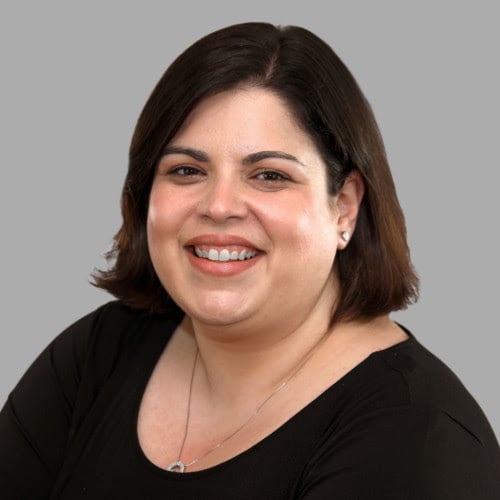July 10, 2019
 by Joel Garcia / July 10, 2019
by Joel Garcia / July 10, 2019

Starting an account-based marketing program from scratch can sound intimidating. The good news is most companies are already doing ABM in one way or another.
Do you have a list of your best customers? Do you try and sell to customers similar to your best customers in a programmatic way?
Great! You’re already doing ABM. Our goal in this article to help you do ABM better.
Before we go further, it's crucial you understand what ABM is and does.
Account-based marketing (ABM) is a focused approach to B2B marketing in which marketing, sales, and customer success teams work together to target best-fit accounts and turn them into customers or expansion opportunities.
ABM can work in tandem with your existing inbound or lead-based strategy, and improve your outbound prospecting efficiency. In fact, ABM can enhance your inbound strategy and help you begin a smarter, scalable outbound sales practice.
In this article, we’ll provide the framework to an effective ABM strategy to help you identify what effective ABM tactics you’re already doing and which are lacking or in need of refinement.
Read on for five steps to creating a successful account-based marketing strategy.
Account-based marketing starts with a basic understanding of your Total Addressable Market and your Ideal Customer Profile.
Your Total Addressable Market (TAM) is the total available opportunity for your product or services – basically, it’s every company you could possibly sell to - in the universe. Overwhelmed yet? Don’t be.
To be successful with ABM, all you need to do is prioritize your TAM by narrowing your focus to companies that fit your Ideal Customer Profile (ICP). These are your *dream* customers - those who are a great fit for your product who will likely renew year after year and hopefully expand as new features are released or your offering grows more robust.
One way to get started is by looking within. In your CRM, create a report of your current customer base in order to create a lookalike model. Every company’s ICP will be different depending on your industry, so don’t be afraid to dig deep into the data to find trends or commonalities between your successful accounts.
You’ll want to end up with a refined list of target companies who match a specific criteria which may include the following attributes: annual contract value (ACV), company size, company maturity, high-utilization, location, technographics, and so on.
Once you’ve determined these traits, you could use a third party service to find all the account records publicly available for that group in order to create them in your CRM for subsequent ABM campaigns. You could also build the infrastructure out internally to unearth and add new account records based on your criteria.
| TIP: Learn the fundamentals of market analysis, intent data, and audience building in this free account-based marketing ebook. |
Once you’ve identified your TAM and ICP, you can start creating your Target Account List (TAL). Yes, ABM is rife with abbreviations. These are the key accounts that you will target through the quarter (or duration of your ABM program which may be as long as your sales cycle).
This might involve some heavy spreadsheeting to combine the firmographic, technographic, engagement, and intent data into one workable list, but there are also several tools on the market designed to expedite this process.
If your ICP results in a list of Named Accounts too large for your team to manage, consider adding in additional filters until you hit a volume you think your sales, marketing, and CSM teams can manage. You can compare this list to your TAM to understand you market penetration and build your growth model accordingly.
Your TAL will also be heavily dependent on your goals, which may include net new acquisition, renewals, or expansion, so be sure to include your success teams early in these discussions to identify growth opportunities.
Here are a few tips to help you get started building your Target Account List.
Everyone knows it’s a lot easier to retain a customer than it is to win a new one. ABM goes beyond net new acquisitions and brings marketing into the customer success world (where they’ve always belonged). Your CSMs can help surface accounts they think are ready for expansion or at risk for churn - igniting your sales and marketing teams to action.
Everyone has a CRM chockablock with contacts, leads, accounts, and more than a few kitchen sinks. These leads and contacts (most old or forgotten) might be ready to buy and you might not even know it. Just because a lead or contact doesn’t fill out a form on your website doesn’t mean they aren’t engaging with your content or campaigns.
With account-based engagement reports and intent data, you can isolate which active or inactive accounts in your CRM are actually in-market and looking to you for solutions and include this as a filter to refine your TAL for better results.
|
Need help deciding which CRM software will help you achieve your goals? Find out more about the easiest-to-use CRMs on G2.com. |
Are you trying to break into a new vertical or market? One of the best ways to achieve this goal is to win a spotlight customer to prove your value to their peers. Ask sales and marketing to compile a list of top brands and logos in a target market and then leverage your current data sources to help determine best-fit.
If you want to prove the effectiveness of your ABM program, isolate some accounts outside of your ABM efforts to measure the success of your outreach. You should be able to track the same metrics that matter to an ABM program across each list - opportunities created, pipeline velocity, and marketing influence on opportunities.
These are just a few examples of accounts you may include or exclude from your ABM program. Most companies use account-based discovery technology to refine this process even further. Account-identification technology can help you determine the high-value accounts most likely to buy and best individuals within those accounts.
Certain ABM tools in the market allow you to identify which of your Named Accounts are engaging actively on your website and which are demonstrating intent for your product.
|
TIP: Learn more about intent data by checking out the G2 Buyer Intent and Terminus integration. |
Not every account is created equal, obviously. For an ABM program to be truly successful, it’s important to understand that tiering must take place so that you can implement a scalable ABM program that can be iterated each quarter.
Depending on your team and ABM maturity, you may start with 2-3 tiers as you build out your program. Each tier will then receive different levels of outreach, depending on the opportunity size. This involves in-depth coordination between marketing and the outbound sales development team. Sales' goal is to set meetings with best-fit accounts, while marketing’s goal is to support this wherever possible. Tiering is the easiest way to produce scalable alignment.
|
Many companies begin with this simple model: Tier 3: One-to-many Tier 2: One-to-few Tier 1: One-to-one |
The ideal place to begin when thinking about Tier 1 is with high-fit accounts with intent and engagement for your offering with no opportunities open.These are your SDRs best chance at setting meetings and accounts you should focus on aggressively with one-to-one campaigns.
Your second tier might include accounts in your broader TAM that may have intent or engagement, but not both. You'll focus on getting your brand top of mind with them and pushing them into a buying cycle, and engaging more of the buying committee with content that drives urgency.
Your third tier might include the rest of your TAM which is not demonstrating intent or engagement but may be a strategic logo or great fit. Whether they're lighthouse customers in a particular industry, ultra high-value, or strategic targets for other reasons, you want to make sure you're always delivering a high-touch, highly orchestrated experience into those accounts.
Other groupings might include existing customers visiting pages related to new offerings they don't have, who represent your best bet for driving expansion, upsell, and cross-sell opportunities. Depending on your team, this may be where your success teams enter the conversation to support both marketing and sales and, depending on their ACV, they may be folded in to your Tier 1 accounts.
The above is a potential way to tier your ABM program, but here is an active example of how Thomson Reuters Legal tiered their 500 target accounts for their ABM program and a few account-based marketing tactics they employed which helped them achieve a 95% win-rate in 2018.
Tier 3 accounts match the Thomson Reuter ICP (200 total), but they have contract renewal dates which are further out or they are net new accounts which will likely have a longer deal cycle. This is the lowest tier which receive personalized messaging and opportunities - but they do not receive the white glove treatment of Tier 1.
Tier 3 ABM Tactic Examples
The second tier includes 200 accounts which are in active renewal discussions or which represent a large new acquisition that is not actively engaging with sales. These 200 accounts need higher-touch marketing support to help the sales and CSM teams stay in front of these larger firms and companies at the right time.
Tier 2 ABM Tactic Examples
Tier 1 accounts (100 total) represent Thomson Reuter’s most strategic targets which include high risk renewals and the largest acquisitions which are 18 months from closing. While receiving the benefits of both the Tier 2 and 3 programming, these accounts also receive custom 1-1 marketing campaigns managed by two individual marketing managers.
Tier 1 ABM Tactic Examples
| TIP: To learn more about Thomson Reuter’s ABM strategy, read their account-based marketing case study. |
Before you launch your ABM program, you should look to previous campaigns to make sure that the tactics you select will actually work for your target accounts. The best way to do that is to look at previous closed-won accounts similar to your TAL to see which opportunities were influenced by which channel, campaign, and content piece - and when.
This type of attribution analysis will help you determine what tiers merit which tactics. It will also help you identify when and how you launch each campaign.
Many ABM platforms will have native marketing attribution reporting, but you can also simply pull an opportunity from your CRM and list every activity listed with every lead and contact associated with the opportunity. From there, you can map out the progression of the deal and apply those learnings to your ABM strategy.
Here are a few questions to answer as you build out your ABM tactics by tier:
Once you’ve answered these questions, you’re ready to determine the best ABM tactics for your tiers and how you should deploy them (and to whom).
Cross-functional collaboration is the bedrock of a robust ABM program. Sales, marketing, and customer success teams should meet early and often in an account-based marketing framework. Everyone brings something to the table that brings value to the others.
Sales and customer success are your boots on the ground - receiving live feedback and experiencing the direct results of marketing’s efforts. Marketing is the eye in the sky, calling plays based on the holistic, data-driven views they look at on a regular basis.
Unless each team is working in lockstep, looking at the same metrics day over day, sales outreach and marketing campaigns will become more generalized (i.e. ignored) and less useful. We recommend holding weekly meetings with your ABM team to review account-based metrics like opportunities created and pipeline velocity to create a consistent feedback loop and executive meetings monthly to reassess the current TAL, tiers, and tactics.
ABM doesn’t have to be an all-or-nothing strategy. Start with a small list of accounts, define how you want to measure success, execute over a quarter, and always test, test, test.
Want to learn more? Find the best ABM software on the market to enhance your ABM strategy today.
Joel Garcia is the Content and Partner Marketing Manager at Terminus, where he runs content strategy and production, partner marketing, and PR. He has also served as the Senior Marketing Manager at Matterport, responsible for growth, acquisition, and retention.
Many companies are shifting from inbound to outbound ABM approaches – and for good reason.
 by Kristina Jaramillo
by Kristina Jaramillo
In the realm of B2B marketing, where efficiency and ROI reign supreme, a new approach known as...
 by Samuel Glowinsky
by Samuel Glowinsky
In project management, two prominent (and popular) methodologies have emerged as contrasting...
 by Aditya Agrawal
by Aditya Agrawal
Many companies are shifting from inbound to outbound ABM approaches – and for good reason.
 by Kristina Jaramillo
by Kristina Jaramillo
In the realm of B2B marketing, where efficiency and ROI reign supreme, a new approach known as...
 by Samuel Glowinsky
by Samuel Glowinsky


